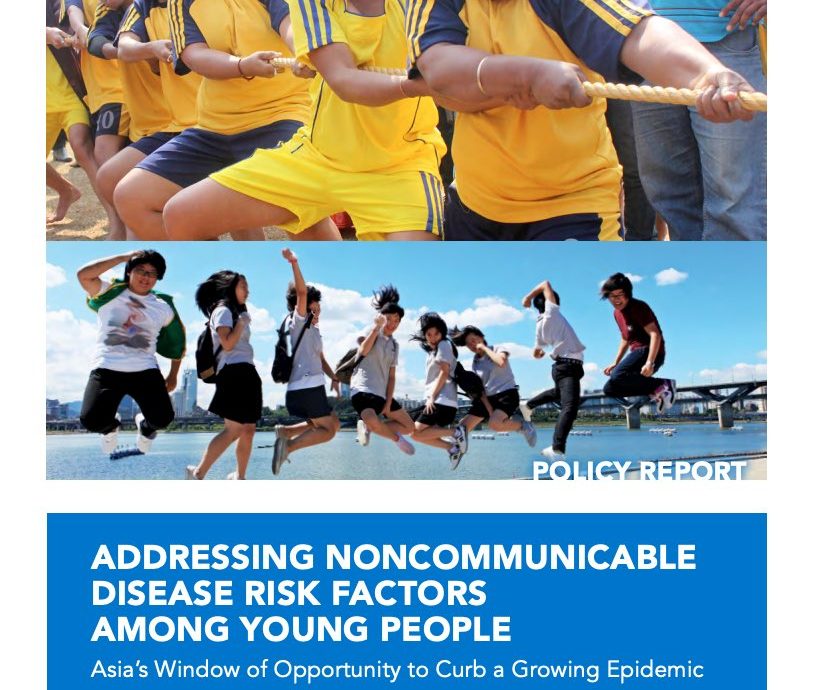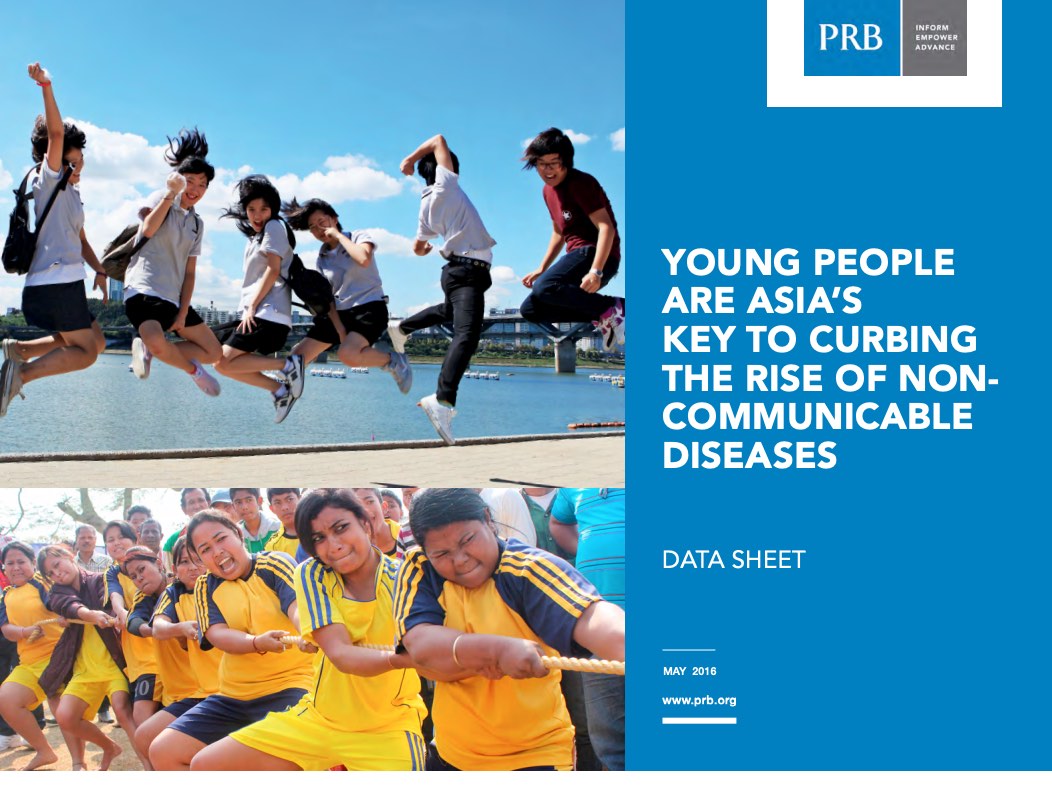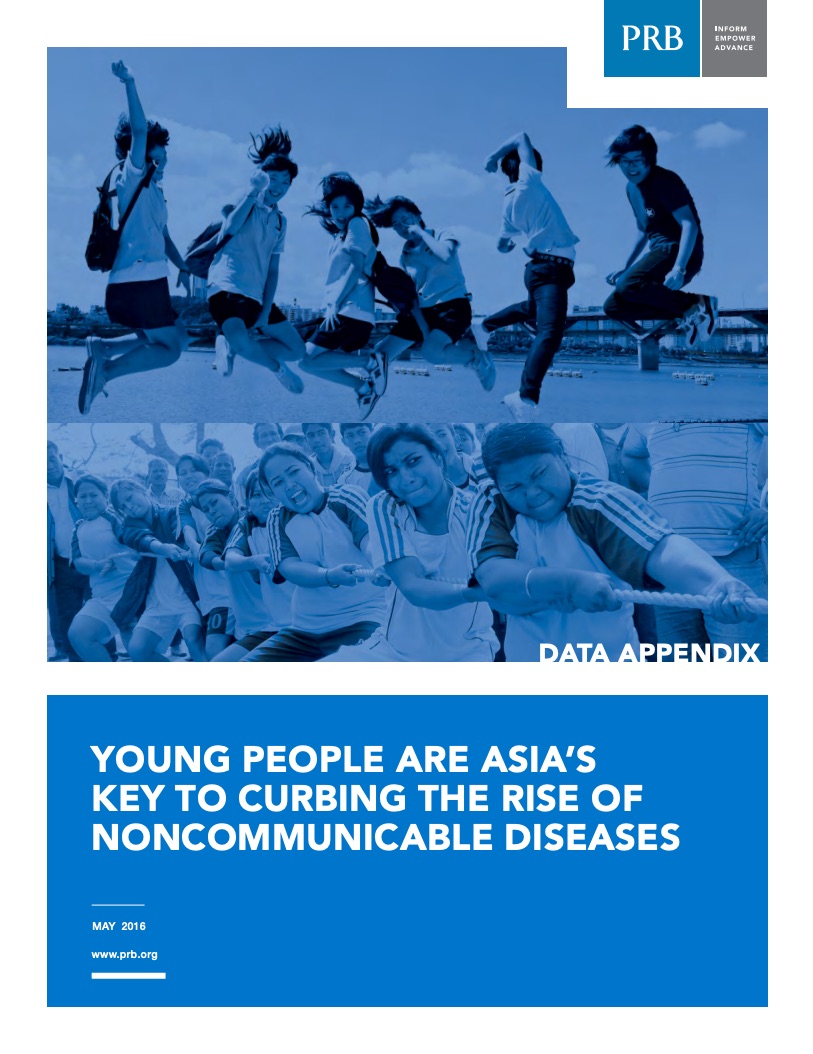
Young People Are Asia’s Key to Curbing the Rise of Noncommunicable Diseases
Asia has an opportunity to curb a rising noncommunicable disease (NCD) epidemic by addressing NCD risk factors among young people, according to a new set of PRB publications.
NCDs are the leading causes of death globally and in most countries in Asia, and are among the top public health challenges of the 21st century. Premature deaths due to NCDs occur at the highest rates in low- and middle-income countries, where 95 percent of Asia’s population lives. This strong impact on individuals who are typically at their peak economic productivity means that NCDs pose a significant threat not only to the health of populations, but also to economic growth and sustainable development in the region.
Asia is facing a growing epidemic of the four main NCDs—cardiovascular diseases, cancers, diabetes, and chronic respiratory diseases. These NCDs share four key risk factors:
- Tobacco use.
- Harmful use of alcohol.
- Physical inactivity.
- Unhealthy diet.
The four risk factors are all modifiable behaviors that are typically initiated or established during adolescence or young adulthood and set the stage for NCDs later in life. Young people in some Asian countries already have high levels of multiple risk factors, and these are likely to rise further in the absence of action.
This package of publications, supported by the AstraZeneca Young Health Programme (YHP) includes a policy report, data sheet, and comprehensive data appendix that highlight the importance of taking action now to address NCD risk factors among young people in Asia. The report describes the scale and scope of NCDs and their risk factors in Asia, as well as examples of promising policy and programmatic interventions for young people. The data sheet includes the latest available data on the four risk factors among young people for 28 countries and territories across East, Southeast, and South Asia. See also similar reports produced by PRB on NCD risk factors among young people in Africa and Latin America and the Caribbean.

 ">
">
 ">
">
 ">
">